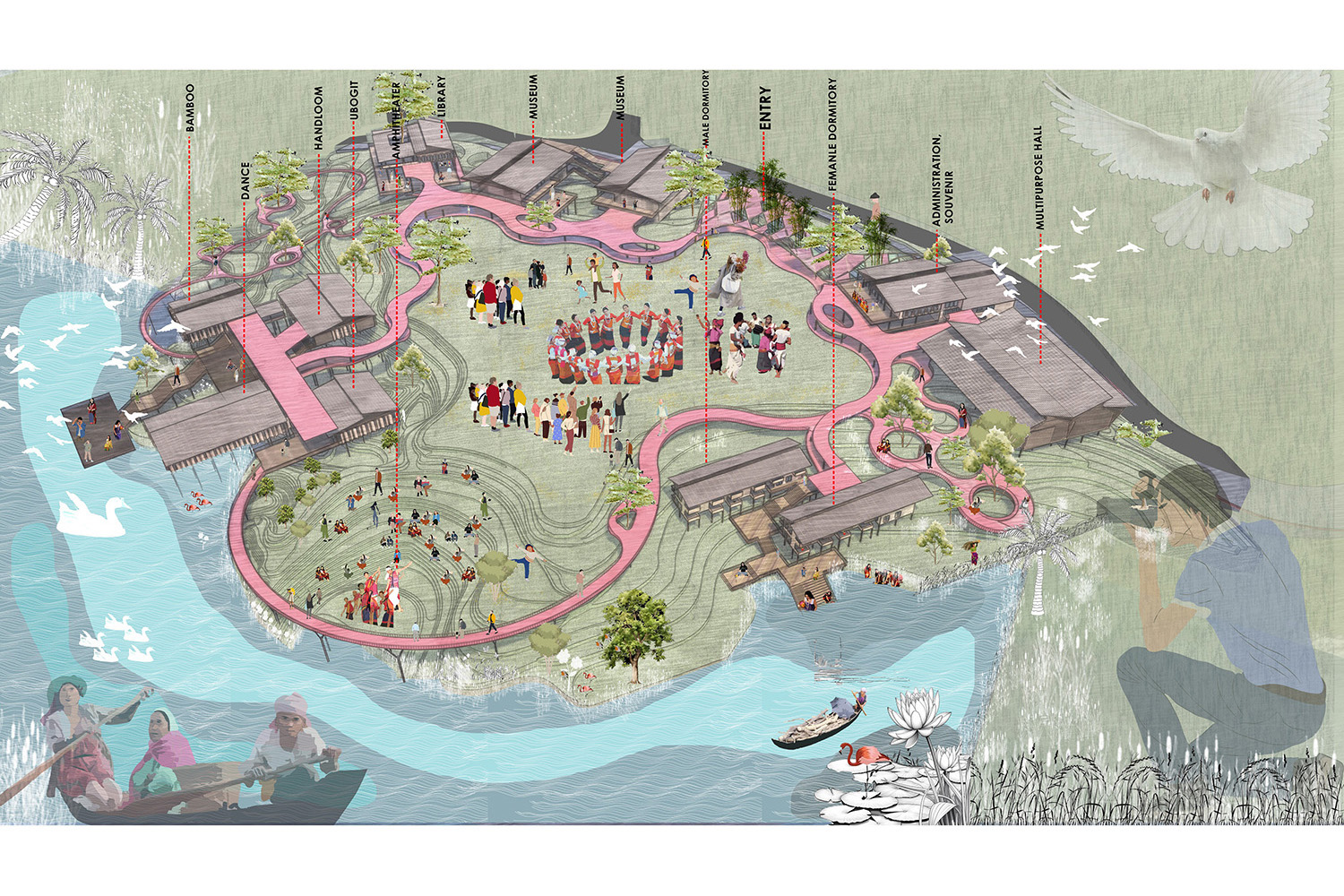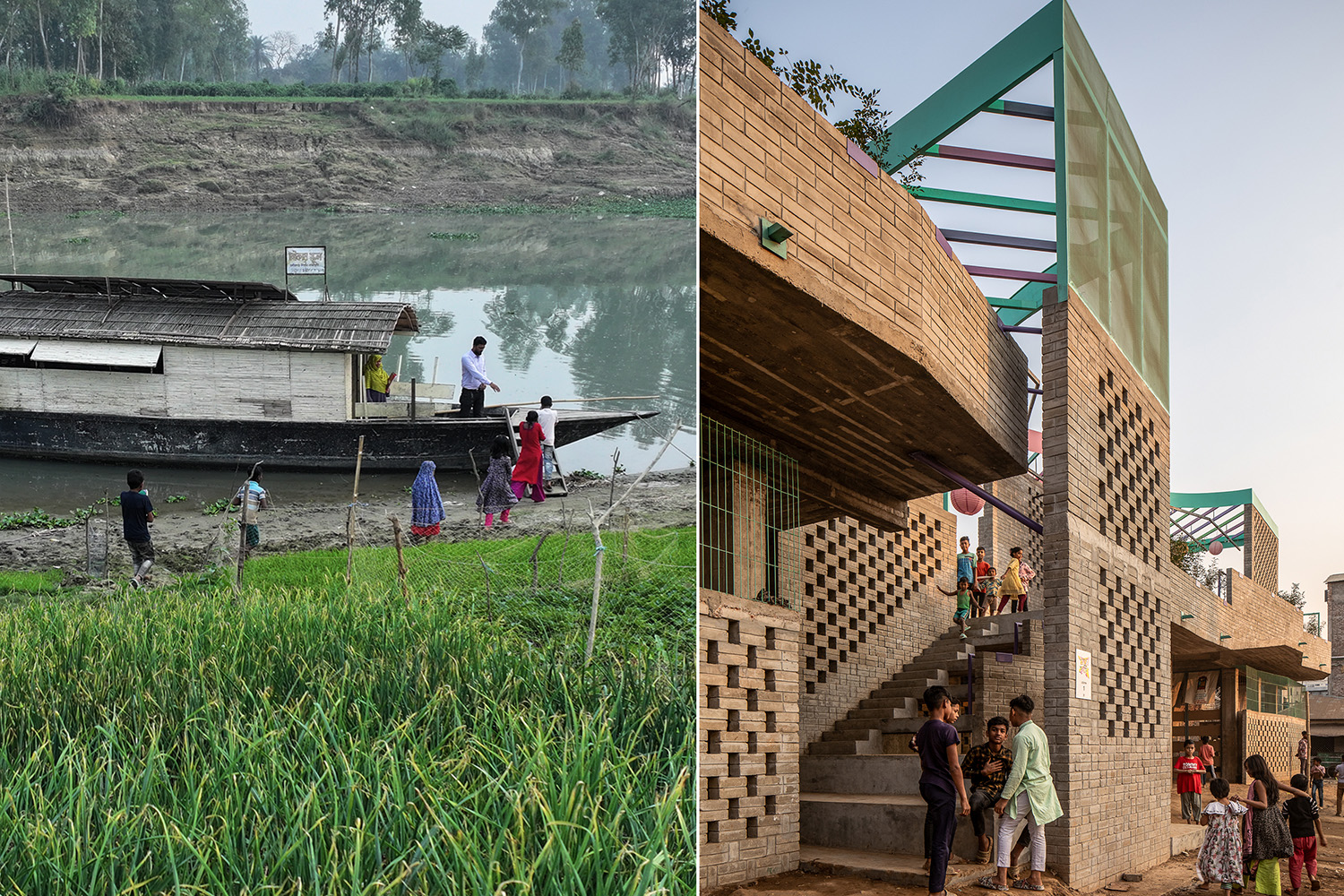Connecting the Dots: Dhaka University TSC in a Changing Landscape

This project envisions a multipurpose urban student center as a unifying hub for Dhaka University’s fragmented campus, with a focus on the historically significant TSC area. Set within a dynamic urban context, the design weaves together public spaces, educational facilities, and cultural programs into an inclusive, interconnected framework that fosters interaction and community. More than just an academic facility, the center serves as a civic space that bridges the university with the city, enhancing pedestrian connectivity and offering flexible environments for both formal and informal activities. Cultural vitality is emphasized through performance spaces, galleries, and student-led platforms celebrating campus diversity. Ultimately, the center redefines the relationship between education, community, and urban life, promoting a cohesive, accessible, and resilient experience for future generations.
Historical Origins of the University of Dhaka and the TSC:
The University of Dhaka, established in 1921 as compensation following the reunification of Bengal after Lord Curzon’s controversial 1905 partition, has become a key institution for higher education in Bangladesh. In 1947, the partition of India and Pakistan brought significant political changes, including Ayub Khan’s introduction of basic democracy. This shift led to the founding of the Teacher-Student Center (TSC) at Dhaka University in 1961, as documented in the Doxiadis archives, with the aim of fostering extracurricular and social activities. curricular and social activities, according to the Doxiadis archives.
Present-Day Challenges of the TSC:
The TSC soon became a vital hub for cultural, social, and recreational life at Dhaka University. Over time, however, the campus and its community have evolved, leaving the original facilities struggling to meet growing and diverse needs. This thesis revisits the TSC’s original purpose, explores its historical context, and proposes a modern framework suited to today’s university community.

TSC Then and Now:
Key findings highlight a significant gap between the existing facilities of the TSC since the beginning of it and the present-day requirements of the university’s population. Issues such as inadequate space, outdated amenities, and a lack of infrastructure emerge as critical areas needing attention for a new center.

The Context:
A living museum and archive of centuries: Dhaka University is a living museum where history, culture, and nature converge. Its campus blends Mughal grandeur, colonial elegance, and modern design, reflecting Bengal’s layered evolution. Landmarks such as Curzon Hall, Shaheed Minar, and Aparajeyo Bangla honor key events like the Language Movement and Liberation War. More than its architecture and greenery, the university remains a vibrant center for festivals, intellect, and cultural expression where the past and present meet.

Archipelago: Additionally, the lack of interconnectivity among all of the zones of this large university campus is due to its horizontal expansion over time and urbanization. Major city traffic passes through this campus, conflicting with the campus traffic, creating a situation like an archipelago.
Strategies for Redevelopment:

Bridging the Archipelago: To overcome the fragmented layout of the campus often experienced as isolated “archipelago dots,” connectivity should be prioritized through pedestrianization and strategically placed event spaces. A network of walkable pathways can unify the campus, encouraging seamless movement. Clustering vibrant, flexible event zones within walking distance fosters interaction, strengthens community ties, and transforms disjointed spaces into a cohesive, dynamic campus environment.

Preserving TSC: TSC stands as a prime example of preserving contextual and iconic creations. Designed by Doxiadis, it is a testament to architectural and cultural significance, making it essential to safeguard its legacy for future generations.
As a 100-year-old campus that embodies historical elements from different eras and serves as a living museum and an ideal place to celebrate and preserve this unique architectural icon.


ZONE A:






ZONE B:



ZONE C:











